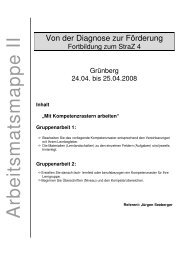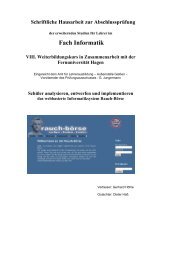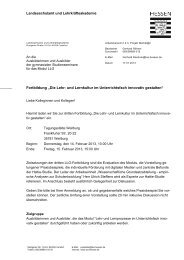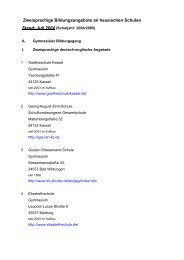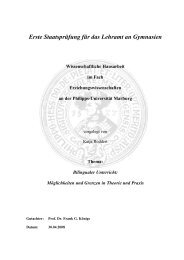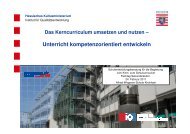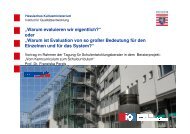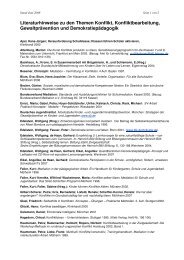PROFILING EUROPEAN CLIL CLASSROOMS
PROFILING EUROPEAN CLIL CLASSROOMS
PROFILING EUROPEAN CLIL CLASSROOMS
Create successful ePaper yourself
Turn your PDF publications into a flip-book with our unique Google optimized e-Paper software.
The Language Dimension<br />
LANTIX<br />
Improve Overall Target Language Competence<br />
This is one of the most common reasons, both historically and more recently, for the<br />
introduction of <strong>CLIL</strong>. This focus stresses language competence in general and therefore<br />
includes reading, writing, speaking and listening skills.<br />
Key <strong>CLIL</strong> Features<br />
➔<br />
➔<br />
➔<br />
➔<br />
➔<br />
➔<br />
Target language competence may be improved to a very high level of fluency<br />
through high exposure to <strong>CLIL</strong> and other forms of language learning<br />
Low exposure can be used to improve overall competence particularly if the <strong>CLIL</strong><br />
experience serves to convert existing knowledge of the language into skill by giving<br />
the learner further opportunities for practice<br />
This focus can be successfully realized through integration of language and nonlanguage<br />
teaching<br />
Although the main focus is on improving overall competence, a programme may<br />
concentrate on certain language skills more than others<br />
High or medium exposure to <strong>CLIL</strong> may be linked to preparing learners for further<br />
study in the target language at home or abroad<br />
Medium to high exposure that seeks to improve overall competence in a target<br />
language should be sensitive to development of the first language (or majority language<br />
of the environment)<br />
Examples<br />
•<br />
•<br />
•<br />
A school for young learners which provides high exposure to <strong>CLIL</strong> over a period of<br />
years, which introduces native models of language use of the target language, and<br />
which is sensitive to development of the first language (majority language)<br />
A school for older learners which specializes in providing education through <strong>CLIL</strong><br />
in two languages because, for example, it is likely that learners will go onto higher<br />
education in one of those languages<br />
A programme introduced into the curriculum for learners who have spent some years<br />
studying the target language who benefit from opportunities to use the language<br />
whilst studying non-language content<br />
Children are designed to pick up language just as birds are designed to learn<br />
how to fly, to migrate or to sing, and spiders are designed to spin webs (InterTalk)<br />
33



